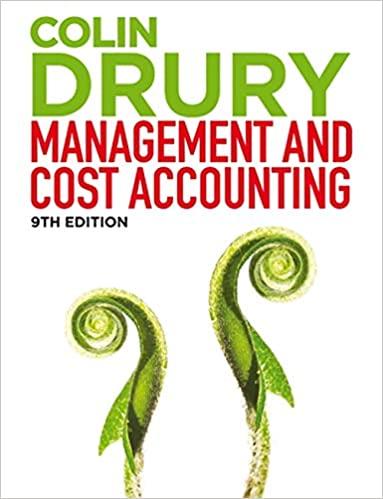Question
Problem 12.26 Activity-Based Management, Non-Value-Added Costs, Target Costs, Kaizen Costing Joseph Hansen, president of Electronica, Inc., was concerned about the end-of-the-year market- ing report that
Problem 12.26 Activity-Based Management, Non-Value-Added Costs, Target Costs, Kaizen Costing Joseph Hansen, president of Electronica, Inc., was concerned about the end-of-the-year market- ing report that he had just received. According to Kylee Hepworth, marketing manager, a price decrease for the coming year was again needed to maintain the companys annual sales volume of integrated circuit boards (CBs). This would make a bad situation worse. The current selling price of $27 per unit was producing a $3-per-unit profithalf the customary $6-per-unit profit. Foreign competitors keep reducing their prices. To match the latest reduction would reduce the price from $27 to $21. This would put the price below the cost to produce and sell it. How could the foreign firms sell for such a low price? Determined to find out if there were problems with the companys operations, Joseph decided to hire Carsen Hepworth, a well-known consultant and brother of Kylee, who specializes in methods of continuous improvement. Carsen indicated that he felt that an activity-based management system needed to be implemented. After three weeks, Carsen had identified the following activities and costs:
Batch-level activities:
Setting up equipment -187,500
Materials Handling -270,000
Inspecting Products-183,000
Product -sustaning activities:
Engineering support-180,000
Handling customer complaints-150,000
Filling Warranties-225,000
Storing goods -120,000
Expediting goods -112,50
Unit level activities:
Using materials-750,000
Using Power-72,000
Manual insertion labor -375,000
Other direct labor -225,000
TOTAL 2,880,000
Carsen indicated that some preliminary activity analysis shows that per-unit costs can be reduced by at least $10.50. Since Kylee had indicated that the market share (sales volume) for the boards could be increased by 50 percent if the price could be reduced to $18, Joseph became quite excited.
Required:
1. Compute the target cost required to maintain current market share, while earning a profit of $6 per unit. Now, compute the target cost required to expand sales by 50 percent. How much cost reduction would be required to achieve each target?
2. Assume that Carsen suggested that kaizen costing be used to help reduce costs. The first sug- gested kaizen initiative is described by the following: switching to automated insertion would save $90,000 of engineering support and $135,000 of direct labor. Now, what is the total potential cost reduction per unit available? With these additional reductions, can Electronica achieve the target cost to maintain current sales? To increase it by 50 percent? What form of activity analysis is this kaizen initiative: reduction, sharing, elimination, or selection?
3 Calculate income based on current sales, prices, and costs. Now, calculate the income using a $21 price and an $18 price, assuming that the maximum cost reduction possible is achieved (including Requirement 4s kaizen reduction). What price should be selected?
Step by Step Solution
There are 3 Steps involved in it
Step: 1

Get Instant Access to Expert-Tailored Solutions
See step-by-step solutions with expert insights and AI powered tools for academic success
Step: 2

Step: 3

Ace Your Homework with AI
Get the answers you need in no time with our AI-driven, step-by-step assistance
Get Started


